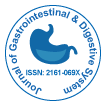Understanding Liver Cirrhosis: Causes, Symptoms, and Treatment
Received: 01-Aug-2023 / Manuscript No. JGDS-23-113554 / PreQC No. JGDS-23-113554 (PQ) / Reviewed: 03-Aug-2023 / QC No. JGDS-23-113554 / Revised: 17-Aug-2023 / Manuscript No. JGDS-23-113554 (R) / Accepted Date: 22-Aug-2023 / Published Date: 29-Aug-2023 DOI: 10.4172/2161-069X.1000760
Introduction
Liver cirrhosis is a serious and potentially life-threatening condition that affects millions of people worldwide. It is a progressive disease characterized by the gradual replacement of healthy liver tissue with scar tissue, impairing the liver's ability to function effectively. In this article, we will explore the causes, symptoms, and treatment options for liver cirrhosis. Excessive and chronic alcohol consumption is a leading cause of liver cirrhosis. Over time, alcohol damages liver cells, leading to inflammation and scarring. Chronic viral hepatitis, particularly hepatitis B and C, can cause cirrhosis if left untreated. These viruses attack the liver and trigger inflammation, leading to tissue damage and scarring. NAFLD is often associated with obesity, diabetes, and metabolic syndrome. When fat accumulates in the liver, it can lead to inflammation and cirrhosis in some cases.
Description
The progression of liver cirrhosis is often slow, and individuals may not experience noticeable symptoms until the disease is in advanced stages. Common symptoms and signs of cirrhosis include. Feeling tired and weak is a common early symptom of liver cirrhosis. Yellowing of the skin and eyes is a classic sign of liver dysfunction. Discomfort or pain in the upper right abdomen may occur as the liver enlarges due to inflammation and scarring. Cirrhosis can lead to loss of appetite and unintentional weight loss. Fluid retention (edema) can cause swelling in the legs and abdomen. The accumulation of bile salts in the skin can lead to itching. Changes in urine color and pale, clay-colored stools may indicate liver dysfunction. Small, spider-like blood vessels may appear on the skin. In advanced cirrhosis, cognitive impairment and confusion (hepatic encephalopathy) can occur due to the buildup of toxins in the bloodstream. Liver cirrhosis is typically diagnosed through a combination of medical history, physical examination, and various tests, including blood tests to assess liver function, imaging studies (such as ultrasound or MRI), and liver biopsy to confirm the presence of cirrhosis and determine its severity. Doctors often use a staging system called the Child-Pugh score or the Model for End- Stage Liver Disease (MELD) score to assess the severity of cirrhosis and help guide treatment decisions. Treatment for liver cirrhosis primarily aims to slow the progression of the disease, manage complications, and improve overall quality of life. The specific treatment approach depends on the underlying cause and the stage of cirrhosis. Here are some key treatment options. Individuals with cirrhosis should avoid alcohol entirely and adopt a healthy diet and exercise routine to manage weight and reduce fat in the liver. Depending on the cause of cirrhosis, medications may be prescribed to manage symptoms, reduce inflammation, and control complications.
Conclusion
Liver cirrhosis is a serious condition that can have life-altering consequences if not diagnosed and managed promptly. It is essential to recognize the causes, symptoms, and treatment options for this disease to improve the chances of a better outcome. If you or someone you know is at risk or experiencing symptoms of liver cirrhosis, consult a healthcare professional for a proper evaluation and guidance on managing this complex condition.
Citation: Panya M (2023) Understanding Liver Cirrhosis: Causes, Symptoms, and Treatment. J Gastrointest Dig Syst 13:760. DOI: 10.4172/2161-069X.1000760
Copyright: © 2023 Panya M. This is an open-access article distributed under the terms of the Creative Commons Attribution License, which permits unrestricted use, distribution, and reproduction in any medium, provided the original author and source are credited.
Share This Article
Recommended Journals
Open Access Journals
Article Tools
Article Usage
- Total views: 542
- [From(publication date): 0-2023 - Feb 02, 2025]
- Breakdown by view type
- HTML page views: 473
- PDF downloads: 69
